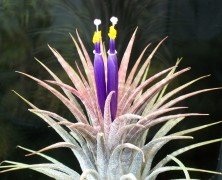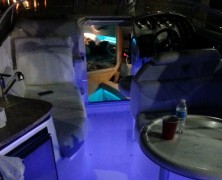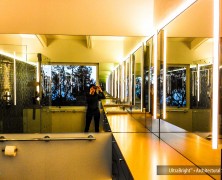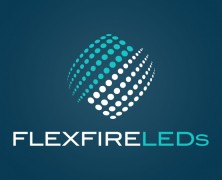“There’s nothing quite like the pleasure you get from plants and flowers,” he said to himself. “They certainly do cheer you up.” ― Charmian Hussey, The Valley of Secrets Over the years we’ve had many customers come to us with questions about DIY LED grow lighting. Taking care of plants is a pleasurable activity that can provide food for a family or offer a portal to nature within the home. Not only that, but being around plants actually increases memory retention and emotional stability. LED lights provide a rich, full spectrum light, are extremely energy efficient, provide even, directional light distribution and emit very little heat — leading to a less expensive garden with richer results. Those interested in indoor gardening should follow these steps to build a DIY LED grow light guide using Flexfire LEDs strip lights. DIY LED Grow Light Parts: UltraBright™ 24v Architectural Series LED strip lights* Aluminum bars for heat dissipation Adhesive pads Silicone RTV silicone Nylon ties Solderless LED strip connectors (strip-to-strip and strip-to-power) Female coaxial connector with screw terminals for wiring 24v LED strip light power supply * Even when working in an indoor environment, consider Outdoor 24v Architectural LED strip lights to protect against humidity and also allow for easier cleaning DIY LED Grow Light Directions: Start by cutting the strip lights to match the width dimensions of your project. Check for markings after every third chip to locate the appropriate place to make your cut. After that, peel off the paper over the adhesive backing and attach the strips along the aluminum bar mounting. The aluminum will act as a heat sink, protecting your plants from excess heat and extending the lifespan of the LED chips. From here, attach solderless connectors to the strip lights. For added stability, tie down...
Installing LED Strip Lights In Boats And Yachts...
posted by Flexfire LEDs
Looking to increase your boat lighting’s functionality and/or “bling” factor? If so, you’re not alone — we here at Flexfire LEDs get calls all the time with questions about installing LED strip lights in boats and yachts. So many in fact, that we’ve decided to share a few ideas and address some of the more common issues with this sort of installation. Whether you’re running a skipper or a barge, taking your boat out for pleasure or for fishing, LED strip lights are a great solution for low energy lighting that can be fully customized to meet the individual size and lighting demands of your boat. The first thing to consider when looking into LED strip lights for your boat is to determine whether the lights will be exposed to environmental elements such as water or sand. If you’re considering LED strips for your deck lighting, or perhaps outside of the hull, make sure the lights are rated for outdoor use and water protection. Each of our LED strip lights has an IP rating that specifies the amount and type of protection it receives from the elements. IP ratings consist of two numbers — the first number refers to the amount of protection against solid objects, and the second refers to liquid protection. The numbers for solid object protection run from 0 (no protection) through 6 (full protection), while the numbers for liquid protection run 0 through 8. A fully waterproof LED strip light would thus have a rating of IP68. For deck accent lighting, we suggest our colorful, customizable and versatile IP65 Outdoor ColorBright™ LED strip lights, which come in static red, green and blue, as well as remote-controlled color changing RGB. Many people call us looking to generate the attractive indirect glow they’ve seen on other boats. To achieve this...
Flexfire LEDs Spring 2014 Photo Contest...
posted by Flexfire LEDs
We take pride in helping customers complete all sorts of LED lighting installations. From restaurants and hotels to basic kitchen redesigns, each project has a unique story. For this reason, we are always eager to see photographs of completed projects using Flexfire LEDs strip lights. To this end, we encourage you to participate in the Flexfire LEDs Spring 2014 Photo Contest. Every Entry Wins! We now have two separate contests, and everyone who submits a qualifying entry will win! Our standard photo contest awards prizes in each of three categories, while our new “Step-by-Step Tutorial” contest rewards those who share thorough details of their projects. Furthermore, everyone who sends us a qualifying submission for either contest will receive a coupon for $30 off any reel of Flexfire LEDs strip lights. Below you’ll find details for each of our two contests. Contest 1: Photo Contest Send us a high-resolution photograph of your completed project using Flexfire LEDs products and we’ll reward you with a coupon for $30 off any reel of Flexfire LEDs strip lights. One winner will be selected in each of these three categories: 1. Best Residential Installation (kitchens, bedrooms, bathrooms, basically anywhere in your home) 2. Best Commercial Installation (retail stores, bars/restaurants, offices, signage, etc.) 3. Best Hobby/Creative Installation (past examples include terrariums, Halloween costumes, and a flying wingsuit!) The winning project in each category will receive a FREE reel of Flexfire LEDs ColorBright strip lights. Again, please be sure to send us a high-resolution photograph, as blurred, low-quality images will not be considered. Contest 2: Step-by-Step Tutorial Contest Many of our customers see these great project photos and wonder, “How did they do that?” We’d love to share your step-by-step installation story on our blog. Everyone who submits a qualifying “Step-By-Step Tutorial” entry will receive a...
Red LED Light Delays Aging in Broccoli...
posted by Flexfire LEDs
Joining similar agricultural studies around the globe, Japan’s Shizuoka University recently found that exposure to red LED light delays aging in broccoli. Researchers from the school’s Department of Biological and Environmental Sciences examined the effects of exposing broccoli to red and blue LED lighting just after harvest, and the results suggest the possibility of both extending the vegetable’s life and improving its nutritional quality. Specifically, exposure to red LED lighting was shown to delay the yellowing process, suppressing ethylene production and reducing ascorbate (AsA). Blue LED lighting did not significantly delay broccoli aging in this way. The full results were originally published in Postharvest Biology and Technology. So what does this mean for a potentially vegetable-optimized future? Will the supermarket produce section soon become a literal red light district? Might red LED kitchen lighting be the next design trend for health-conscious homeowners? Stay...
Flexfire LEDs Announces High CRI LED Strip Lights...
posted by Flexfire LEDs
In keeping with its commitment to providing innovative LED lighting solutions, California-based Flexfire LEDs has announced its new UL Listed UltraBright™ High CRI Series LED Strip Lights. Designed to meet today’s higher lighting quality standards, this new line measures >93 on the color rendering index, fortifying the company’s reputation for delivering cutting edge technology at consumer-friendly prices. CRI, or color rendering index, is the standard measure of a luminaire’s ability to accurately render a specific color spectrum in comparison with a perfect reference source at a given color temperature (i.e. daylight). Simply put, if you direct the light onto a particular object, how natural do its colors look? Testing for CRI is a complicated process, requiring specialized machinery designed specifically for this purpose. Lamps are tested in terms of how they render eight basic colors (or “R values”), termed R1 through R8. A score from 0-100 is given for each color, and these eight numbers are then averaged to determine the lamp’s overall CRI rating. Those measuring above 90 are generally considered highly effective at rendering natural color; for a practical understanding, many of the traditional fluorescent lights that people consider “harsh” or “artificial” measure in the 60-70 CRI range. LED lighting is the established industry leader in energy efficiency, and advanced technological development means LED products are now available at dramatically lower prices than even just a few years ago. This dynamic is driving a worldwide shift to LED lighting, one that is further accelerated by government regulations such as those found in California’s Title 24. Established by the State’s Energy Commission, Title 24 addresses a number of energy efficiency standards, particularly those having to do with lighting. To be classified as “High Efficacy” and thus qualify for utility rebates and other advantages,...










